[/caption]
Grab your red/cyan 3-D glasses and take a look at these marvelous new anaglyphs created by Nathanial Burton-Bradford from the latest data from GOCE satellite, showing Earth’s gravity field – or geoid. The geoid is essentially a map of the shape our world would be its surface were covered by water and if gravity were the only thing shaping this global ocean’s surface. These exaggerated views (the surface in the images of the geoid is amplified by a factor 7,000) show the most accurate model of how gravity varies across the planet. Nathanial was able to obtain high-resolution video from Dr. Rune Floberghagen of the GOCE team from which he extracted appropriate frames in order to construct hi-res anaglyph images of numerous longitudes across the globe.
In our previous article about GOCE (Gravity Field and Steady-State Ocean Circulation Explorer), we showed the entire globe and how it looks like a spinning potato. Nathanial’s anaglyphs show close-ups of various parts of the globe. Above is Australia and Asia. Take a trip around the GOCE geoid 3-D world below. Remember, use the red/cyan 3-D glasses to get the full effect!
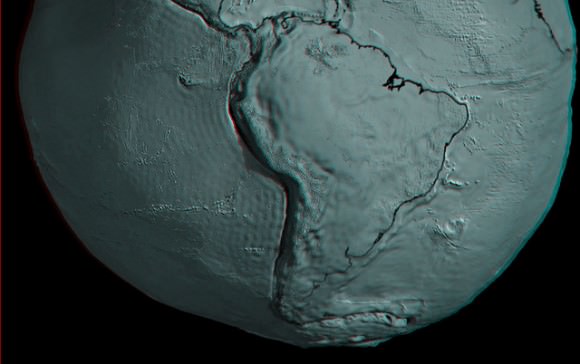
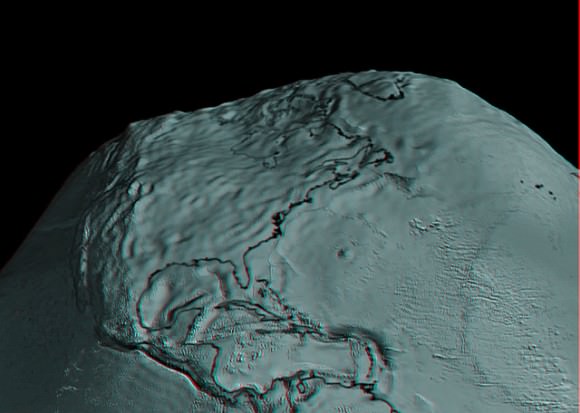
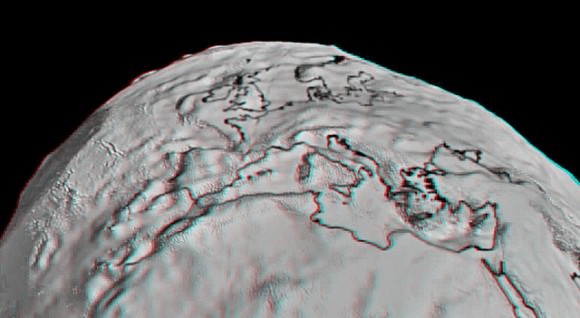

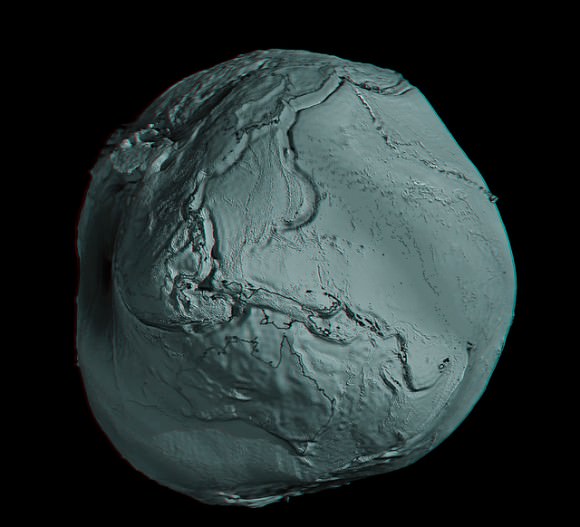

Thanks to Nathanial Burton-Bradford for sharing his images. See more at his Flickr page.

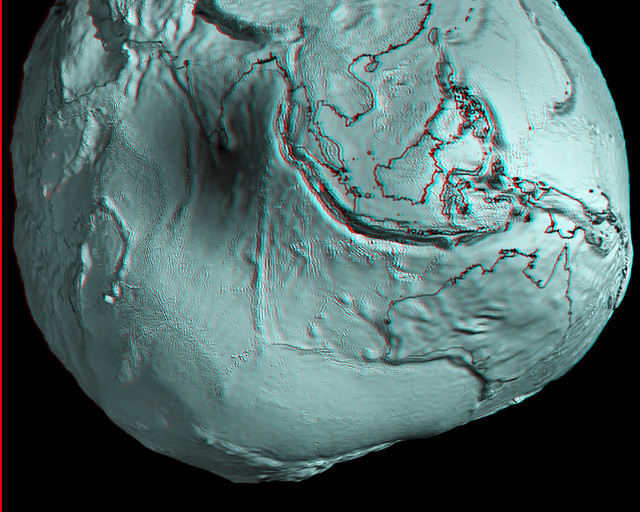
So does this mean I would weigh the most at the tip of India?
I can almost see where the Moon might have been excavated from North America?
Rotating harmonic gravitational perturbations anyone? Do these gravity anomaly in any way effect the moon?
Wasn’t that one up during the crackhead “Super Moon” [which wasn’t one] discussion? Maybe you can google that.
The Moon impacted way before the current crust formed. In fact, it probably took away an initial crust, and a new one formed. Then Last Heavy Bombardment broke that one, or at least there is no record of older pieces.
The current crust is shaped by plate tectonics. The North America craton was part of Laurasian supercontinent ~ 200 Ma. [Wikipedia]
Pattern matching, hoof steps, zebras vs horses.
No, you would weigh least at the tip of India as gravity there is lowest.
Why so low at the tip of India? That spot cought my eye as well. What’s going on there? Mu?
I didn’t get how gravity relates to the geoid, too little data to get at the math, so I cheated and looked up a tutorial through Wikipedia:
The geoid is a mean hydrostatic surface, a constant gravity potential energy surface. It is thus equipotential vs gravity force, i.e. the force is everywhere perpendicular to it.
Its gradient F = – dg/dH*H provides a measure of gravitational acceleration: g_s = g_g + F, where g_s = surface gravity and g_g = gravity on the geoid. (From a Taylor expansion.)
This is the trick connecting the two pictures: “Gravity is measured on the actual surface of the Earth. In order to determine the geoid, the masses outside the geoid must be completely removed or moved inside the geoid by the various gravity corrections, and gravity must be reduced onto the geoid. Geodesists need the elevation H relative to the geoid when they derive the geoid from gravity.”
So where its curvature is negative (and relative elevation H negative) surface gravity is lower than the mean (India), where it is positive it is higher (Greenland). “A map of gravity anomalies (usually expressed in units of milliGals) tends to highlight short wavelength features better than a map of the geoid.” I.e. directly mapping surface gravity provides better resolution, not surprisingly.
Looking at that anomaly map, or the original geoid, there is indeed a negative gravity anomaly centered on the tip of India. One can note on the new geoid data that the reverse positive gravity anomaly centered on the Himalayas shows up now.
Googling shows up speculations on the anomaly from the Indian plate separating from Africa and/or hitting the Asian plate (explaining the Himalayan anomaly too) to mantle movements connected to the Deccan Traps volcanism. Anyone has any pointers to the main position here?
“where its curvature is negative”. More correctly I should say “where it dips”.